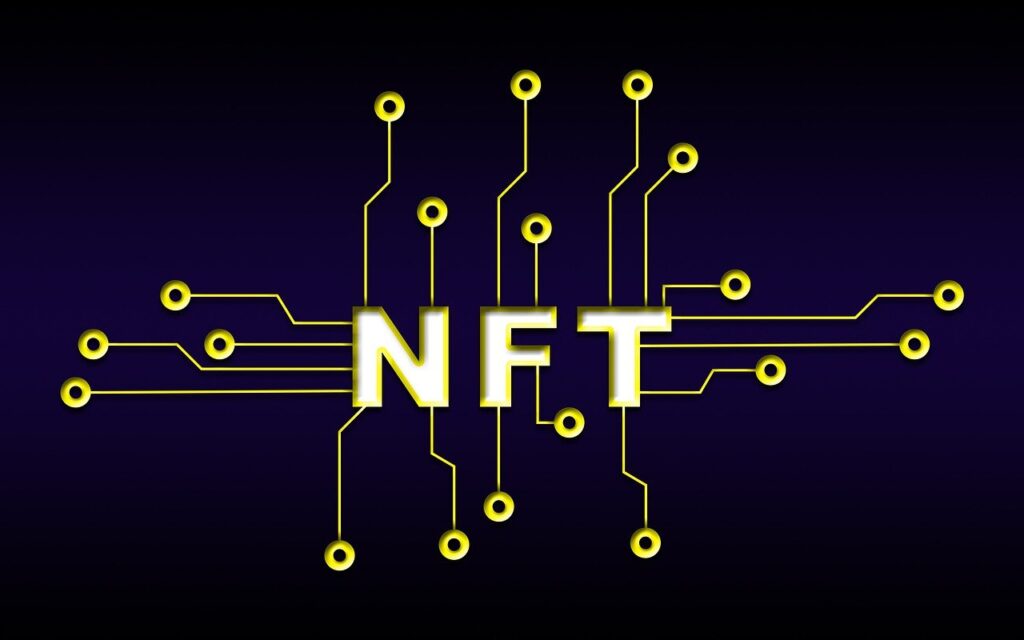The Boom and Bust of Centralized Crypto Exchanges
In the chaotic world of cryptocurrencies, few organizations have experienced such volatile lows and highs in the form of centralized exchanges (CEXs). CEXs were once the primary on/off ramp for cryptocurrency for millions of users. They are witnessing their incredible journey sequenced as explosive growth, regulatory problems, scandals, and a still-evolving future along the emergence of decentralized exchanges.
The Early Days of Crypto: Blockchain Pioneers Navigating New Frontiers
Initially, from 2009 onwards, with Bitcoin being set into motion, the idea of a virtual currency exchange neared nonexistence. Through forums or private arrangements, the earliest users of Bitcoin traded the coin with each other. Subsequently, BitcoinMarket.com, the first legitimate Bitcoin exchange, was launched in 2010. It then became a small-scale platform to trade the new cryptocurrency.
But it was Mt. Gox, a site that had initially been set up as a trading portal for Magic: The Gathering cards, to attained centre stage and stood as the world’s first major centralized cryptocurrency exchange. As of 2013, Mt. Gox had become so large that it processed over 70% of Bitcoin transactions in the world. Gox was the first infrastructure that was truly designed to support the cryptocurrency economy. It made it accessible to ordinary consumers to purchase and sell digital assets without any technical know-how.
Crypto’s Golden Years: Unprecedented Expansion and Industry Leadership
The cryptocurrency market underwent substantial growth between 2017 and 2021, and centralized exchanges were among the biggest winners. Startups including Binance, Coinbase, and FTX transitioned to multi-billion-dollar legacy businesses in only a few years.
If viewed as a single event, Coinbase’s initial public offering (IPO) in April 2021 was a tipping point. When the firm debuted on Nasdaq following a valuation period of $85 billion at its peak, it signalled that crypto had arrived in the mainstream of financial markets. Not long after, Binance also grew to become the world’s largest cryptocurrency exchange by volume, at times handling over $100 billion of transactions per day.
CEXs diversified their platforms, moving past spot trading to incorporate
- Offering trading in options and futures
- Staking services
- Initial Exchange Offerings (IEOs)
- Provided payment services
- NFT marketplaces
- Crypto lending and borrowing
These all-in-one platforms proved convenient for millions of prospective users. The user-friendly interface and wallet management built into a central exchange allowed many to use cryptocurrency, even though they would shy away from managing cryptocurrency or understanding all the underlying blockchain complexities.
Initial Indicators of Collapse: Cracks in the Crypto Core
Though achieving success, centralized crypto exchanges were constantly tripped by obstacles, hinting at future disruptions:
- Security Vulnerabilities
With central exchanges, however, it is always a history of breaches and hacks. Mt. Gox’s ultimate fall, with some 850,000 bitcoins lost (worth billions now), was perhaps an early warning. Several other major security breaches followed:
- Bitfinex lost 120,000 Bitcoin in 2016.
- Coincheck managed to regain $530 million worth of NEM tokens that were stolen in 2018.
- KuCoin was hacked for $281 million in 2020.
Crypto skeptics found the irony south of amusing-that technological aids designed for safety in direct transactions were being intermediated, trust-dependent.
- Regulatory Uncertainty
As crypto became more popular and started thriving, regulators all over the world were forced to take note of this contained revolution. Exchanges had to deal with an ever-changing regulatory environment differing from one country to another:
- South Korea instituted very stiff KYC standards.
- China banned exchanges for cryptocurrencies outright, in 2017.
- The United States SEC launched investigations into token listings for securities.
- The EU, on the other hand, went on to establish an entire Regulations for Markets in Crypto-Assets (MiCA).
Numerous exchanges had been caught on the wrong side of the law, out-manoeuvring regulators at every turn as well as limiting access to the availability of services in certain regions.
The Collapse of Centralized Exchanges: Failures and Controversies Explained
Dramatic onslaughts against scandalized collapses departed with a steadily directed accruing mistrust of what used to be a governmentally controlled exchange system:
- The FTX Disaster
The spectacular dam-break of FTX, once valued at $32 billion, shook the market to its foundations. It seemed to be one of the most secure and professional exchanges in existence, yet was built on fraud. Founder Sam Bankman-Fried was later convicted of fraud for stealing billions in customer funds.
The FTX collapse painted a clear picture of the dangers of central control and opaqueness vis-à-vis exchange transactions. Never had the phrase “not your keys, not your coins” been superficially louder.
- Other Major Failures
- Celsius Network and Voyager Digital were shuttered in 2022. They also stopped freezing millions of customer assets.
- BlockFi declared bankruptcy following exposure to FTX.
- Crypto.com admits to sending $400 million to an incorrect address.
- Binance offered $4.3 billion to settle U.S. government charges in 2023.
These failures laid bare systemic flaws within the centralized exchange model: Lack of transparency, risky corporate practices, conflict of interest, and inadequate consumer protections.
The Decentralized Alternative Starts to Flourish
While centralized exchanges were grappling with the threat of decentralized exchanges and while we were seeing significant growth in DEXs. Uniswap, dYdX, and Curve (etc.) provide trading without custodial risk, and function as smart contracts instead of a business.
- The pros of DEXs were becoming clear
- Users are only responsible for their belongings until they trade.
- A central authority cannot misuse funds
- Transactions that are transparent and verified on the blockchain
- Refusal to shut down of the regulatory framework
- In many cases, a requirement for KYC does not exist.
The total value of DEXs rocketed from a mere 1 billion in early 2020 to upwards of 100 billion at peak times. The speed of developments in DEXs has progressed via layer-2 technology, which is eliminating previous time and cost-prohibitive obstacles.
The Current Market: Adapt or Perish
The centralized exchanges of today are at a stalemate. Those who remain have taken several steps to try to regain trust.
- Proof of Asset Holdings: Many exchanges are now publishing proof of reserves by cryptographically proving that they are holding the funds that customers have placed. This is certainly a step in the right direction, but the documents are not proof that they are solvent.
- Regulatory Adherence: The remaining larger exchanges recognize that they will have more leverage by being compliant with regulations and working with authorities rather than against them. Coinbase and Gemini are two examples. They are applying for licenses in other jurisdictions and delisting tokens that might be deemed a security, like LUNA.
- Risk Management Funds: Some exchanges are creating dedicated insurance funds that will payout customers when they lose funds from a security breach. It’s worth noting that these funds do not necessarily insure the full amount at risk.
- Seamless Integration Within DeFi Networks: A few centralized exchanges now allow users to integrate with decentralized finance protocols and access DeFi yields using simplified interfaces.
Prospects: Building a Hybrid Ecosystem
Despite any issues they may have, these exchanges are not going anywhere anytime soon, as they provide many benefits that a lot of people appreciate:
- Easy for anyone to use.
- Fiat on-ramps and off-ramps
- A customer service department
- Higher throughput numbers for transactions
- Lower fees, in many cases.
In the future, the typical design will likely see a mixed ecosystem in which centralized and decentralized exchanges operate and service different users and uses. Centralized exchanges may settle down as traditional banks, wherein the financial services are regulated by companies. Defi, meanwhile, is still working on reinventing financing and trading.
Key Takeaways for the Industry
The Fast-Growing and Eventual Demise of Centralized Crypto Exchanges Offers Several Lessons:
- It is fragile trust, easy to destroy: The crypto market was built on the premise of doing away with intermediaries from the aspect of trust. Yet paradoxically, it heavily depended on trustworthy third-party organizations.
- The need for regulation is inescapable: as the crypto industry grows larger, more comprehensive regulation simply must take place. It works more efficiently that way when compliance is voluntary rather than that of resistance.
- Transparency is fundamental: Those exchanges that really make it will be those transparent to the extreme level in their operations.
- Innovation is continuing: The challenges faced by centralized exchanges have pushed the emergence of alternative decentralized exchanges, in particular concerning improvements in user experience.
Central cryptocurrency exchanges are not yet history. These entities helped push cryptocurrency towards the people and soon got to work on building the infrastructure needed to support the new digital asset market. Whether they can adapt to changing circumstances and somehow forge ahead or whether they will be supplanted by alternative decentralized systems is one of the big questions in the development of finance.



















